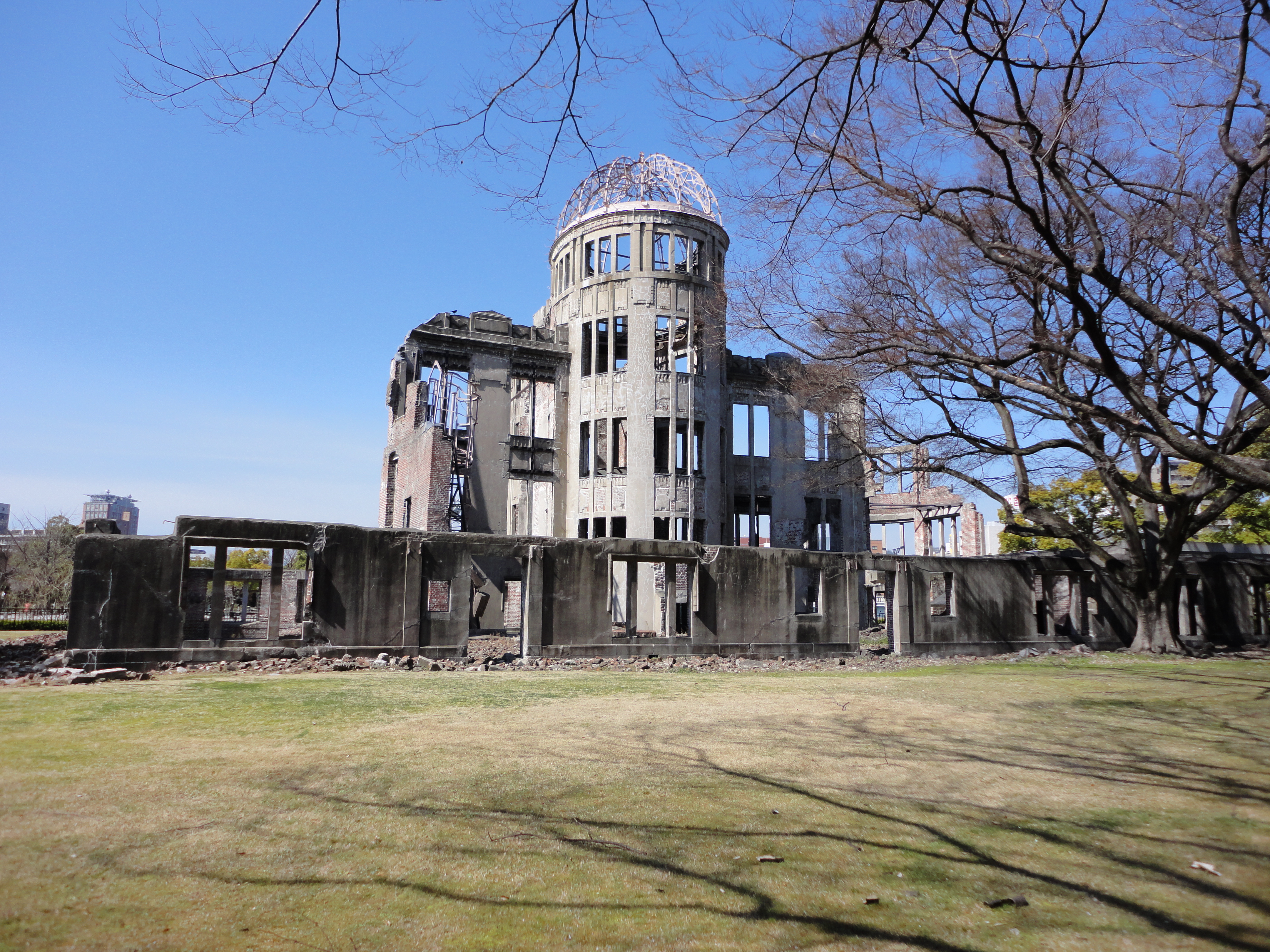
A-Bomb dome as it stands today
One week ago in Hiroshima, I had the privilege of hearing a survivor of the atomic bombing share her experiences during and following the horrible events of August 6th, 1945.
After arriving in Hiroshima by shinkansen (bullet train), I found myself unsure of what to expect from the city. Walking out of Hiroshima station, one is confronted by a bustling Japanese city much like any other that you can find in southern Japan. While this wasn’t unexpected, I was later surprised to hear that within a few months of the atomic bombing of Hiroshima, houses and buildings were already being rebuilt as they were before. Setting off from the station, our small group began the relatively short walk to our first stop of the day, the A-bomb dome.
Originally known as the Hiroshima Prefectural Commercial Exhibition, the A-bomb dome currently stands almost exactly as it did after the detonation of little boy. Due to a targeting discrepancy, little boy was detonated directly over the A-bomb dome, only 500 feet from the ground. The copper dome of the building instantly melted from the 3000 degree Celsius flash from the detonation. Molten copper ran down the inside of the buildings’ walls, acting as a kind of mortar and further reinforcing the structure and in many ways allowing it to survive in the condition it stands today. After many years of indecision, the Japanese government eventually decided that the A-bomb dome would be preserved as part of the Hiroshima Peace Memorial.
Immediately upon arriving at the dome, I was overwhelmed by the reverent atmosphere of the sight. Small talk immediately ceased as people came to the dome, confronted by a ghostly reminder of the horrors of the atomic bomb.
Making our way to the Hiroshima Peace Museum from the A-bomb dome, our small group stopped at several other monuments within the Peace Park including the Children’s Peace Monument, the Peace Flame, and the Cenotaph for Korean Victims. The entire park has a feeling of reflection and mourning, and yet still hopes to inspire peace through remembering the atrocities of war.
The museum proper houses an incredibly well done and informative exhibit that not only details the history of Hiroshima through the bombing, but also warns of the dangers of nuclear proliferation. As someone who has long held a love of Japanese history, I found myself incredibly impressed historically with the manner in which the exhibit portrayed the atomic bombing of Hiroshima. Far from the sin of omission that is so often thought to be indicative of Japanese opinion surrounding World War Two, the exhibit has no qualms in recounting the part played by all parties in the war. Despite this, there is no finger pointing or blame to be found in the exhibit, only a factual recounting of the events. Perhaps the most moving experience during the exhibit was when I accidentally bumped into an elderly Japanese man. After I apologized for running into him, he turned to me and quietly said “thank you for coming all the way to see this” before slowly walked away. I still don’t know who he was, but I was floored by the quiet sincerity in his voice. All of this served to powerfully drive one point home to me: The exhibit isn’t about blame, it is about honoring those who perished on August 6th, 1945.
Having the opportunity to hear from a survivor of the atomic bombing of Hiroshima was the greatest privilege I have ever had. Prior to the speech, I had been picturing an ancient and very possibly disfigured Japanese woman who would be giving a recounting of her experiences. Much to my surprise the speaker was a lively Japanese woman who appeared energetic and in relatively good spirits. Our speaker had been just sixteen years old when Little Boy was dropped on Hiroshima. At the time of the bombing, she was working in a factory roughly a kilometer and a half from the epicenter of the blast. She vividly recounted the horrors she encountered after managing to crawl free of the collapsed factory: the black rain, the cries of vaguely human victims roaming the streets, and the heavy atmosphere of despair and confusion. After days of searching, she eventually found her father, who had been searching the rubble of the factory for her for three days. The exertion of the search and remaining radiation led to her father’s death only weeks later. With no help coming from either the crumbling Japanese government or the victorious allies, she worked for ten years in order to pay medical costs for her mother and younger siblings.
After finishing her moving recounting, our speaker graciously accepted a few questions from the roughly fifty students in attendance. When asked if she harbored any anger towards anyone over the atomic bombing of Hiroshima, our speaker gave an uncharacteristically strong yes. Much to my surprise, she went on to say that she held anger towards everything involved: the United States, the Japanese government, and most of all war. In the wake of the atomic bombings, the Japanese government ignored the victims for ten years before offering medical aid of any kind. While the speaker said that she has since traveled to the United States and found that she generally likes Americans, she was understandably damning of the bombing of Hiroshima and all those involved. After finishing the question and answer segment, our speaker expressed her willingness to meet with students individually and even graciously agreed to allow us to get a picture with her. I am honored to have gotten to stand beside the most courageous person I have ever met.
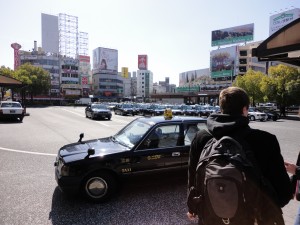
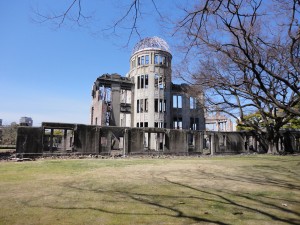
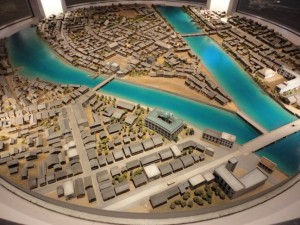
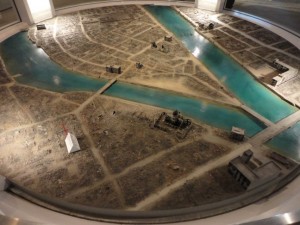

As always, I appreciate your writing and your perspective. Thank for taking time to share, during this challenging time.